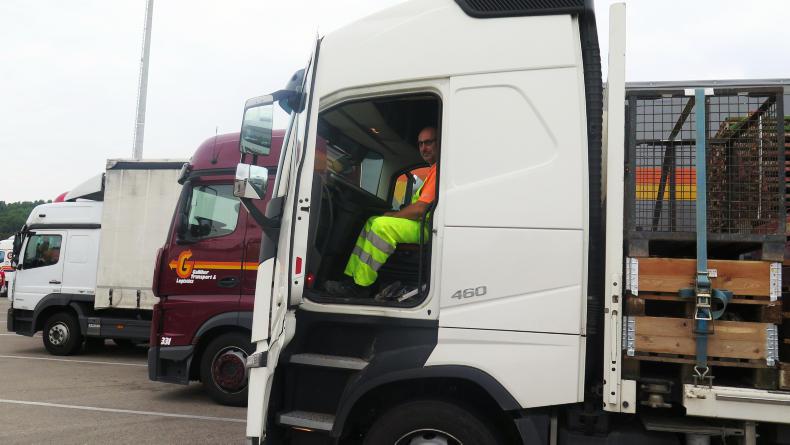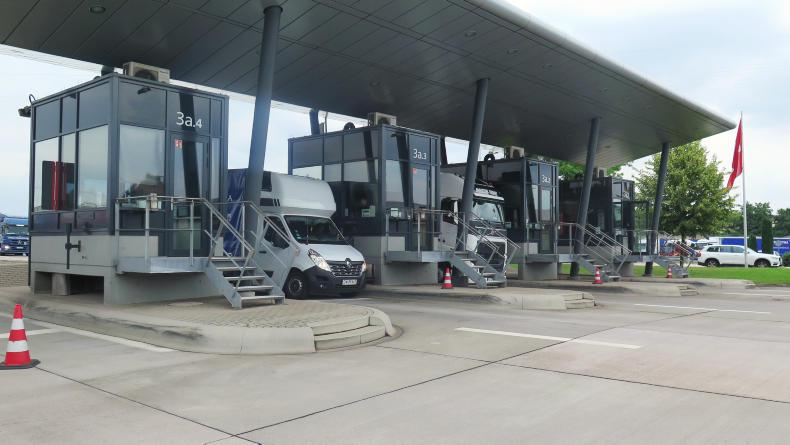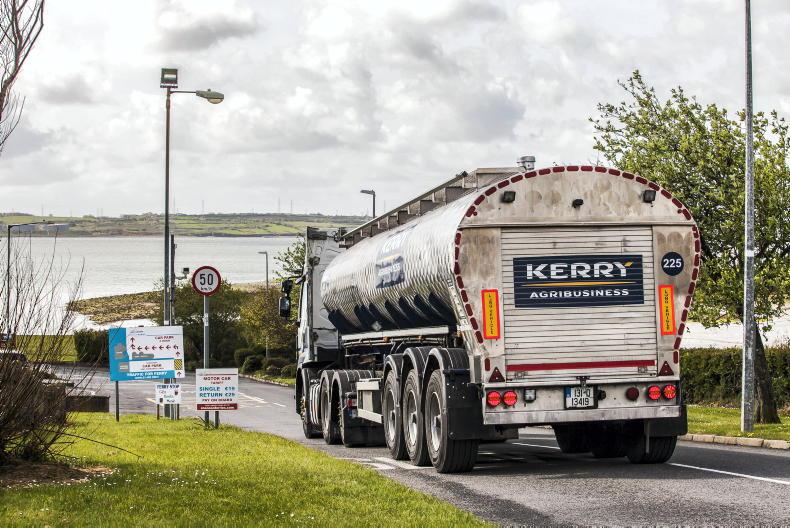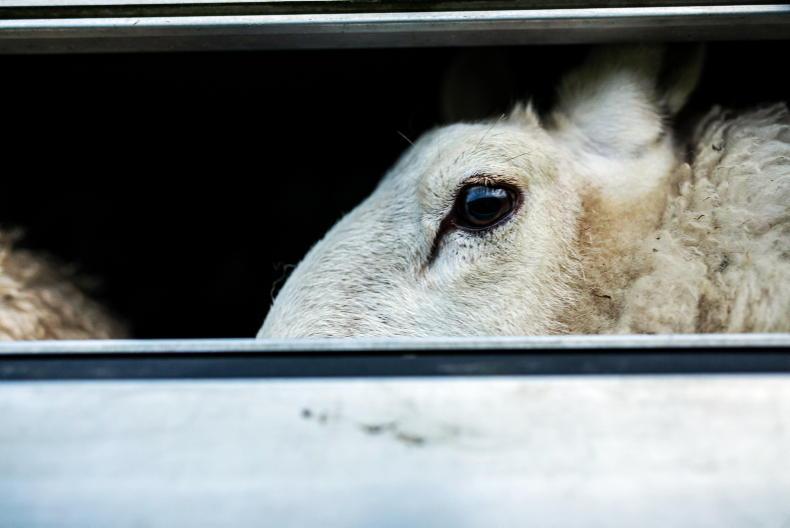With the chances of a seamless border between the UK and EU 27 diminishing, the Irish Farmers Journal visited a border crossing between Switzerland and Germany. Switzerland has an extremely close relationship with the EU as a non-member and is often referred to as a possible model for a future UK-EU 27 relationship.
Switzerland is a member of the European Free Trade Association (EFTA), and took part in negotiating the European Economic Area (EEA) agreement with the European Union though unlike Norway it opted not to join it. Even though it has voted against joining the EU, this gives it a close trading relationship and there is complete free movement of people between Switzerland and the EU as it is a member of the Schengen area.
Border crossing
The main border customs office Lörrach-Zollamt Weil am Rhein-Autobahn is situated between the German city Weil am Rhein and Basel in Switzerland. The customs office is responsible for vehicles driving from Switzerland to Germany.
Every day about 1,100,000 cars and 24,000 trucks cross the whole Swiss border. According to the annual report of the responsible traffic authority, last year about 64,000 vehicles on average per day crossed the major border crossing at Weil am Rhein-Autobahn towards Germany (motorways A861 and A5).
Commercial vehicles
All commercial vehicles are required to stop at the border to complete the customs process.

Huge parking facilities, stewarded by attendents to prevent it being used as a lorry park for purposes other than clearing customs
The required time depends on the customs process. Crossing the border for the purpose of transit under the NCTS (New Computerised Transit System) takes between two minutes and 20 minutes in places where the lorry needs to be parked. Crossing the border to clear goods for import takes about 30 minutes all in all. In cases where the goods are physically inspected, it takes up to two hours. The vehicles come from all parts of Europe and near east. The border is located at a major junction in Europe.

Border crossing for commercial vehicles at Swiss - German border. Striking capacity of lorry park to accomodate commercial vehicles requiring further investigation.
The Border Guard Corps, a federal law enforcement agency which acts as both the border guard and customs service for Switzerland, are responsible for people and vehicle checks at the border.
Relationship with EU
More than 30 free-trade arrangements are in force for Switzerland as EU member states are by far the most important market for Swiss exporters. Both the commercial and the private goods traffic are controlled, though people are free to move between both countries. The duration of an average customs control for a lorry is dependent on the scope of inspection. A full inspection generally takes longer than a paper documented processing for instance. It is always dependent on the individual case but if a complete load inspection is required, it can take several hours.

Lorry drivers are quite matter of fact about the delays because they have never experienced anything other than a manned border crossing where checks are made.
Within the EU, the customs codex of the European Union is valid. As Switzerland is not an EU member state but a member of the European Free Trade Association (EFTA), it is treated similar to every other third country. With this group of states there are agreements.
Managing the traffic
The Irish Farmers Journal spoke with Peter Kunz, who works on the parking space in front of the customs office. His job is to keep the operation of the lorry parking working smoothly and directing trucks to the parking lots. The park requires stewarding to manage the customs clearance process. Otherwise there would be chaos.
“Some lorries are working with the so-called heavy traffic levy (RPLP), which is a toll that has to be paid depending on the weight, emission level and the driven kilometres of the truck. It is hard to say where most trucks come from. From experience, I can say that many trailers come from Eastern European countries such as Poland, Hungary or Romania. As well as trucks, passenger cars can be checked regularly by the customs team randomly. The drivers have different stay times. It can vary between 10 minutes and six to seven hours,” Kunz explains. He emphasises that a lot of lorry drivers abuse the parking spaces by remaining in them after they are cleared to go to eat their lunch or as a break and in the process causing greater congestion than there otherwise would be.
Lorry drivers
Yauhen Umrykhin is a lorry driver for logistics company ILS GmbH in Wuppertal/Germany. While preparing for the onward journey, he spoke to the Irish Farmers Journal about driving his lorry and crossing EU borders. He only crosses the border very infrequently, once every few months. During his journey from Switzerland to North Rhine-Westphalia in western Germany he is carrying a cargo of scrap aluminium pallet goods. In working for a logistics company, it means his cargo can be almost anything. On this occasion, his stay at the customs office only took about 10 minutes. He recognises this as part of his job and he does not feel stressed about it, even if the bureaucracy and customs clearance process takes a bit longer.
Dirk Metz works for truck haulage Spedition Wagner in Mannheim/Germany. The Irish Farmers Journal asked him about the nature of his work and the effort it required to cross the border where he was waiting for over one hour to get his documents that would allow him continue his journey. At this point he was concerned about having to wait overnight and what it would add to his already long working day of between 12 and 13 hours. He usually just drives within Germany and rarely crosses the border with Switzerland but when he does he finds it quite tiresome.
The Swiss-German border works smoothly and efficiently but it is still a border and there are delays for checks and inspections. The border crossing is built to accommodate heavy goods vehicles and has a large parking area covering several hectares. Trade between Switzerland and the EU is smooth and efficient but there is a logistical management system that involves commercial vehicles stopping, presenting their paperwork and being cleared. It requires a huge area, which would be physically impossible to install on Irish border crossings in the time between now and the UK’s departure from the EU, even if it was decided to start work immediately.
With the chances of a seamless border between the UK and EU 27 diminishing, the Irish Farmers Journal visited a border crossing between Switzerland and Germany. Switzerland has an extremely close relationship with the EU as a non-member and is often referred to as a possible model for a future UK-EU 27 relationship.
Switzerland is a member of the European Free Trade Association (EFTA), and took part in negotiating the European Economic Area (EEA) agreement with the European Union though unlike Norway it opted not to join it. Even though it has voted against joining the EU, this gives it a close trading relationship and there is complete free movement of people between Switzerland and the EU as it is a member of the Schengen area.
Border crossing
The main border customs office Lörrach-Zollamt Weil am Rhein-Autobahn is situated between the German city Weil am Rhein and Basel in Switzerland. The customs office is responsible for vehicles driving from Switzerland to Germany.
Every day about 1,100,000 cars and 24,000 trucks cross the whole Swiss border. According to the annual report of the responsible traffic authority, last year about 64,000 vehicles on average per day crossed the major border crossing at Weil am Rhein-Autobahn towards Germany (motorways A861 and A5).
Commercial vehicles
All commercial vehicles are required to stop at the border to complete the customs process.

Huge parking facilities, stewarded by attendents to prevent it being used as a lorry park for purposes other than clearing customs
The required time depends on the customs process. Crossing the border for the purpose of transit under the NCTS (New Computerised Transit System) takes between two minutes and 20 minutes in places where the lorry needs to be parked. Crossing the border to clear goods for import takes about 30 minutes all in all. In cases where the goods are physically inspected, it takes up to two hours. The vehicles come from all parts of Europe and near east. The border is located at a major junction in Europe.

Border crossing for commercial vehicles at Swiss - German border. Striking capacity of lorry park to accomodate commercial vehicles requiring further investigation.
The Border Guard Corps, a federal law enforcement agency which acts as both the border guard and customs service for Switzerland, are responsible for people and vehicle checks at the border.
Relationship with EU
More than 30 free-trade arrangements are in force for Switzerland as EU member states are by far the most important market for Swiss exporters. Both the commercial and the private goods traffic are controlled, though people are free to move between both countries. The duration of an average customs control for a lorry is dependent on the scope of inspection. A full inspection generally takes longer than a paper documented processing for instance. It is always dependent on the individual case but if a complete load inspection is required, it can take several hours.

Lorry drivers are quite matter of fact about the delays because they have never experienced anything other than a manned border crossing where checks are made.
Within the EU, the customs codex of the European Union is valid. As Switzerland is not an EU member state but a member of the European Free Trade Association (EFTA), it is treated similar to every other third country. With this group of states there are agreements.
Managing the traffic
The Irish Farmers Journal spoke with Peter Kunz, who works on the parking space in front of the customs office. His job is to keep the operation of the lorry parking working smoothly and directing trucks to the parking lots. The park requires stewarding to manage the customs clearance process. Otherwise there would be chaos.
“Some lorries are working with the so-called heavy traffic levy (RPLP), which is a toll that has to be paid depending on the weight, emission level and the driven kilometres of the truck. It is hard to say where most trucks come from. From experience, I can say that many trailers come from Eastern European countries such as Poland, Hungary or Romania. As well as trucks, passenger cars can be checked regularly by the customs team randomly. The drivers have different stay times. It can vary between 10 minutes and six to seven hours,” Kunz explains. He emphasises that a lot of lorry drivers abuse the parking spaces by remaining in them after they are cleared to go to eat their lunch or as a break and in the process causing greater congestion than there otherwise would be.
Lorry drivers
Yauhen Umrykhin is a lorry driver for logistics company ILS GmbH in Wuppertal/Germany. While preparing for the onward journey, he spoke to the Irish Farmers Journal about driving his lorry and crossing EU borders. He only crosses the border very infrequently, once every few months. During his journey from Switzerland to North Rhine-Westphalia in western Germany he is carrying a cargo of scrap aluminium pallet goods. In working for a logistics company, it means his cargo can be almost anything. On this occasion, his stay at the customs office only took about 10 minutes. He recognises this as part of his job and he does not feel stressed about it, even if the bureaucracy and customs clearance process takes a bit longer.
Dirk Metz works for truck haulage Spedition Wagner in Mannheim/Germany. The Irish Farmers Journal asked him about the nature of his work and the effort it required to cross the border where he was waiting for over one hour to get his documents that would allow him continue his journey. At this point he was concerned about having to wait overnight and what it would add to his already long working day of between 12 and 13 hours. He usually just drives within Germany and rarely crosses the border with Switzerland but when he does he finds it quite tiresome.
The Swiss-German border works smoothly and efficiently but it is still a border and there are delays for checks and inspections. The border crossing is built to accommodate heavy goods vehicles and has a large parking area covering several hectares. Trade between Switzerland and the EU is smooth and efficient but there is a logistical management system that involves commercial vehicles stopping, presenting their paperwork and being cleared. It requires a huge area, which would be physically impossible to install on Irish border crossings in the time between now and the UK’s departure from the EU, even if it was decided to start work immediately.












SHARING OPTIONS